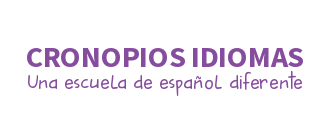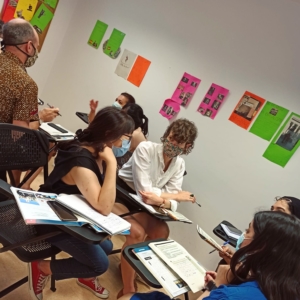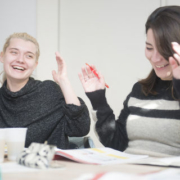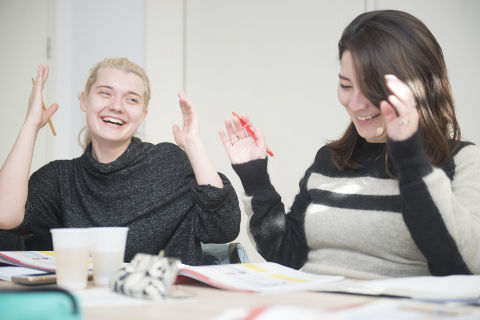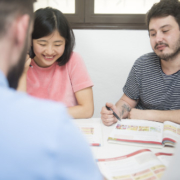Spanish lessons for adults in Madrid
Today I want to talk about our Spanish lessons for adults in Madrid. In this post I will introduce the basic arrangement of our intensive courses of Spanish and how we approach adult learning in our school: Cronopios Idiomas. I will also explain one learning activity you may find in our classes to set an example of what can you expect of the Spanish lessons in our school.
Truth to be told, our classes are generally aimed to adults. Learning a second language in immersion is an enterprise pursued by both adults, either young or not, and underage students. I our classes there can be students as young as 16 and as old as life can get, it’s up to the student! Students attending Spanish lessons for adults in Madrid do it for several reasons. There are young students wanting to access University in Spain, there are professionals living in Spain in need to develop their Spanish level for their work, there are also adults that have been studying Spanish for some time in their own countries and come every year for some days or weeks to booster their knowledge. Not to forget adults with a Spanish spouse or girlfriend or boyfriend in need to communicate in their love’s own language. And many more cases and situations we’ve encountered along the way.
Learning a second language for an adult can be a wonderful and fulfilling experience and can also be a challenge: for some students, this challenge can be more motivating than for others. Dealing with all the needs I´ve explained above as well as the obvious differences of students having a wide range of mother tongues is what makes our work so interesting. The experience of a Spanish teacher is constantly changing, because not only teaching one level or another is not the same but also teaching one group of students is completely different as teaching another.
To address this ever-changing environment, nowadays Spanish teachers generally choose: first, to speak Spanish from the very beginning. Our teachers are professionals that know perfectly well how to adapt the level of their communication to each group, they speak slower when required and use a range of words adapted to the knowledge of their students. Speaking Spanish from the very beginning does not mean that teachers lack other tools to explain themselves when needed.
Second: the aim of the classes is to create a learning environment where students communicate effectively in Spanish performing communicative tasks in real-life situations and contexts, such as introducing themselves in different social groups, making friends, shopping, going to the doctor, dealing with Spanish friends and culture, solving everyday issues like cleaning at home, choosing a movie, discussing the social and cultural topics of the week, expressing discomfort, cooking, and so on.
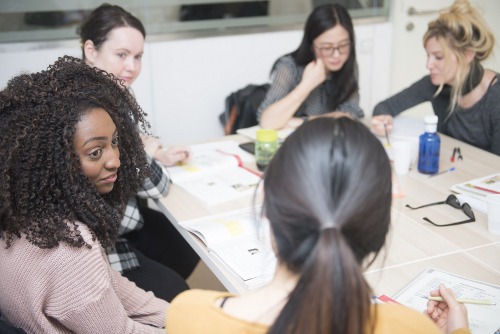
Obviously, Spanish lessons for adults in Madrid are not actually real-life situations. The lessons are taught in a classroom, there is a white board, chairs, and tables. Not to worry! Not only we all tend to be very comfy learning in a classroom, after all that´s how most of us have learnt our whole lives, but also, our teachers know how to induce the situation they want the student to communicate in, resulting in both fun and stimulating activities.
For instance, to learn the ways and vocabulary to interact in a restaurant, first we work with the student’s book: using audios, exercises, texts, images, and video we get in touch with the basics. Then we work in groups, the first thing we must do is create our own menu, either with our own dishes, or with Spanish ones. Afterwards and still working in groups, we recreate a restaurant in the class or somewhere in the school, including glasses, cutlery, tablecloth, salt, and the menus we created in the previous activity. The students act as waiters and customers taking turns, and the teacher checks out everybody is doing fine, helps when needed and makes sure is a pleasant activity for everyone involved. If there’s someone that would rather not act, we understand each one has different social skills, so the teacher will find another “job” for this person to do.
In our Spanish lessons for adults in Madrid, we learn by constantly communicating with each other and the teacher, but also, we can learn in the classic way, this means that there will be grammar explanations, sometimes fill in the blank exercises, and the infamous homework, which I honestly believe can be very useful for the students willing to do it.
So, when you come to our classes, feel free to share with the teacher which activities you prefer to do, but also let yourself try new ways of learning and trust that everything we do in class is aimed to your best interest, and, above all, enjoy learning another language, another point of view, a different way to be in the world.
